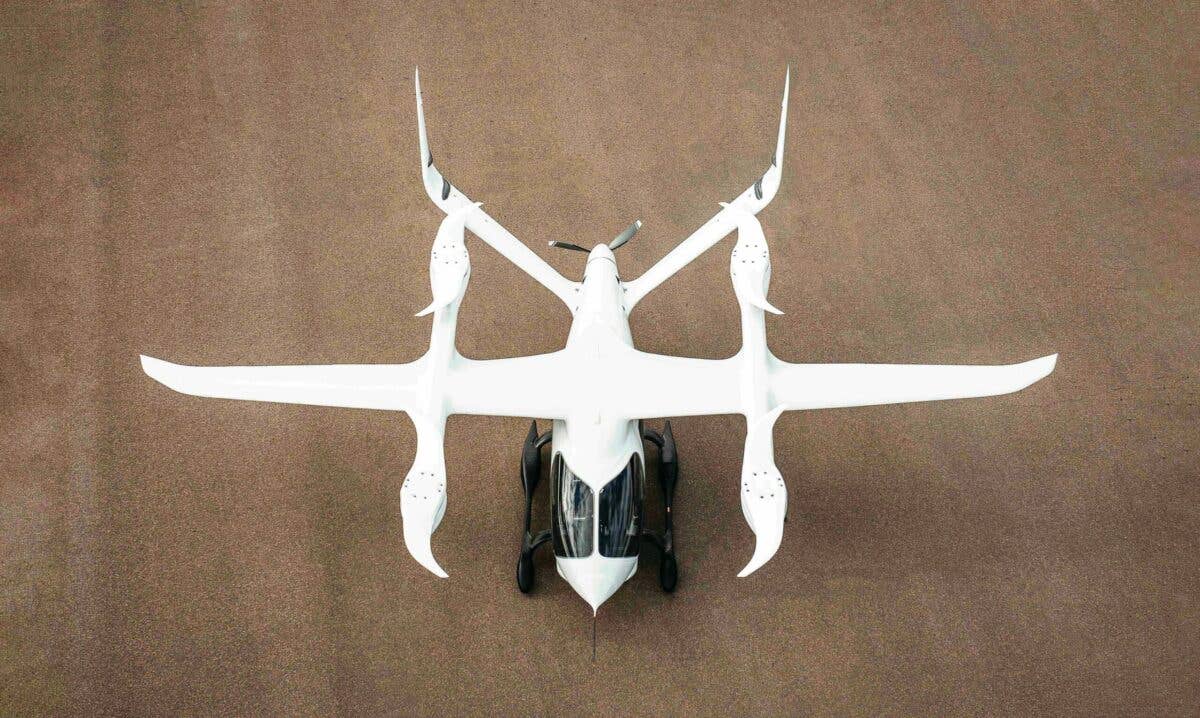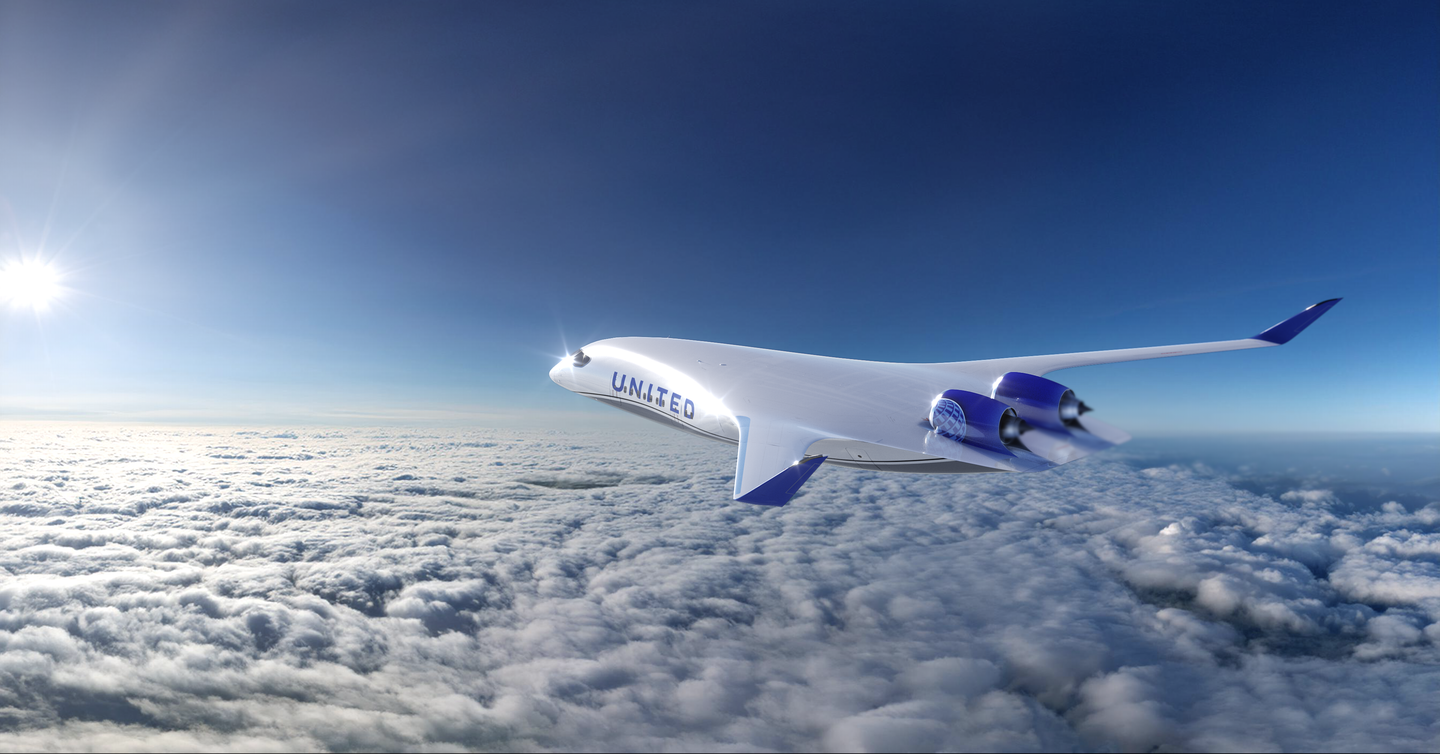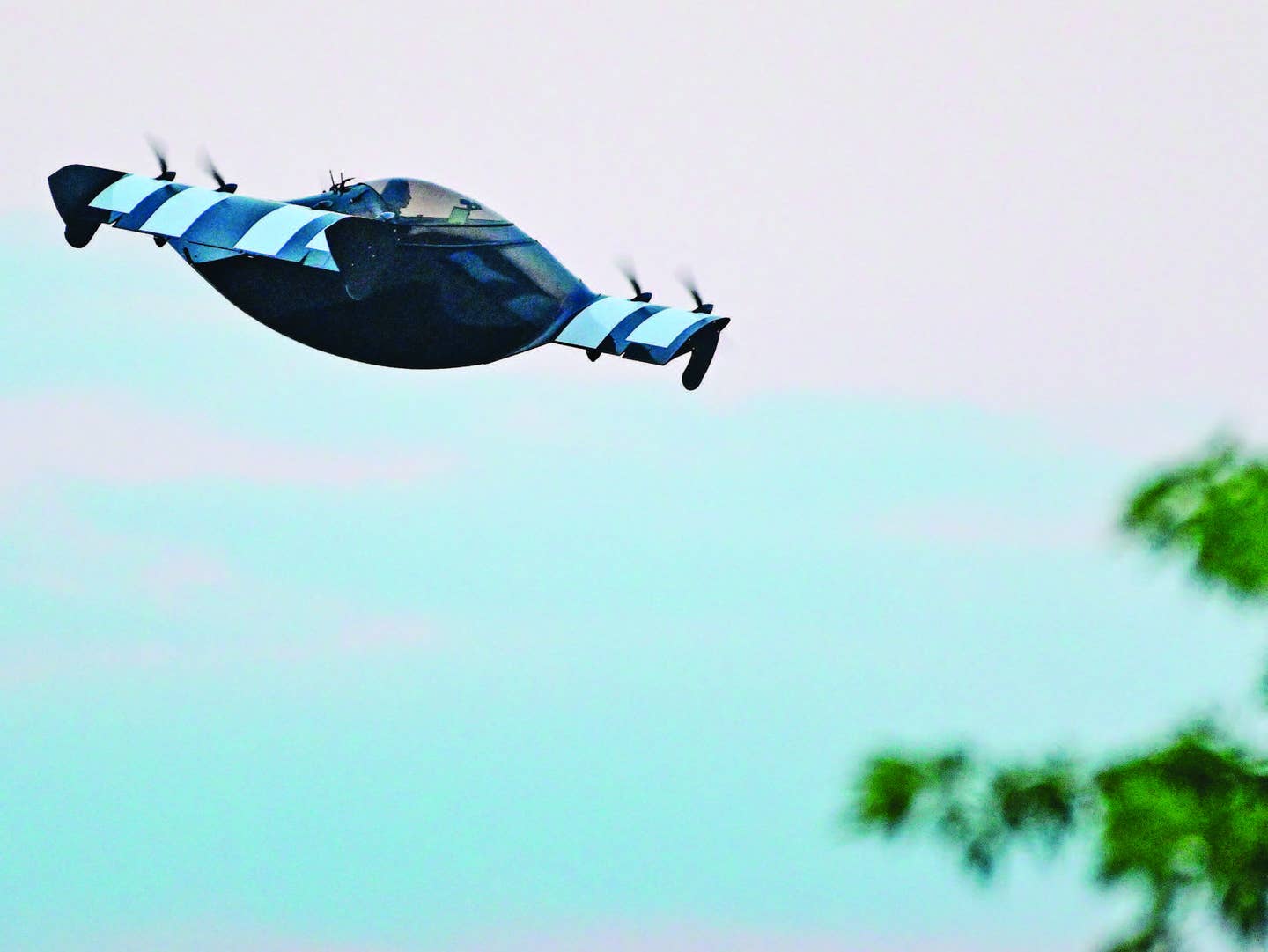High Times in the Electric Zoo
Countless ideas fly about in the airspace of today’s technology.

The Beta Technologies Alia-250 eVTOL aircraft seats six and has a single pusher prop on the tail. [Courtesy: Beta Technologies]
We're in a period of innovation that resembles the one from 1908 to 1915, when countless ideas—many harebrained—were tried, a few of which evolved into the airplanes of today.
Now, it’s all about electricity. Electricity is an unlikely way of propelling airplanes—you can store enough of it to go either far or fast, but not both—yet hundreds of projects are currently in development. A lot of them are in the electric vertical takeoff and landing or eVTOL category, for which electric power is, if anything, even less appropriate. A list of eVTOL proposals takes up several pages online at evtol.news/aircraft. Several surprising names pop up. Cadillac? Aston Martin? Really? Good luck trying to tell the sheep from the goats.
Electric aircraft fall into several broad categories:
1. Conventional Transports
These are the most likely to enter service within a few years. They use runways. Electric motors replace piston or turbine engines on existing airframes (or, in a few ambitious cases, novel ones). Power may be supplied entirely by batteries or fuel cells, or by fuel-burning motor-generators supplemented by batteries providing excess power for takeoff and climb. The putative virtues of fuel-electric hybrids are: a) reduced cruising fuel flow through optimal matching of engine size to cruise requirements; b) use of a relatively cheap and clean grid power to charge batteries on the ground; and c) adaptability to non-fossil fuels, including hydrogen.
2. VTOL with Wings
These have wings for efficient cruise, supplemented by multiple rotors for vertical takeoff and landing. VTOL is difficult: If the lift/drag (L/D) ratio of an airplane is 12:1, it takes 12 times as much thrust to hover as to cruise. Projects fall into two categories—and some have one foot in each:
a. Fixed Rotor: Lift rotors and their motors are fixed in place, typically on booms mounted along the wingspan. In cruise, the lift rotors are feathered and/or stowed in a low-drag position and one or more cruise motors produce thrust. This arrangement has the advantage of mechanical simplicity, but the boom and rotor structures become deadweight and drag in cruising flight.
b. Vectored Thrust: The thrust axes of some or all of the lift rotors rotate to the horizontal to produce cruising thrust. Wings may or may not rotate with them. Aerodynamic efficiency is greater than for stowed-rotor types, but at the cost of additional weight and mechanical complexity.
3. Multirotor
These are scaled-up variations on the self-stabilized quadcopter hobby drone. Proposed configurations involve various numbers and placements of ducted or open rotors. Difficulties include the high power requirement of hovering flight, which limits duration and range; the impossibility of autorotation; and, particularly for unpiloted versions, collision and obstacle avoidance in busy urban airspace where they are imagined to replace taxi cabs.
The fundamental problem for an electric aircraft is how to make the most of its energy supply. The classical answer is to have a large wingspan and to fly at the speed for least drag. That speed is unfortunately quite low, but it increases with wing loading, and so, to be fast and efficient at the same time, the airplane should have as small a wing area as it can, consistent with an acceptable stalling speed.
Here are some numbers, partly published and partly my estimates, for one of the better-publicized projects,the Beta Alia-250: gross weight, 7,000 pounds; wing-span, 50 feet; wing area, around 200 square feet. Two mid-span booms each carry two fixed motors with stowable rotors of about 12 feet in diameter. The fuselage pod seats six and has a single pusher prop on the tail.
Based on these specifications, the most efficient speed at gross weight would be around 110 kias, and would require around 200 hp (150 kW) continuous at 1,000 feet msl. The airplane would need at least 800 hp to hover at gross weight. Notably, it is very large and heavy for a six-seater, for a simple reason: batteries. At current specific energies for commercial lithium batteries—6 pounds of battery yields 1 hp for an hour—it would require 1,200 pounds of batteries per hour of cruise, plus maybe 500 pounds more for vertical takeoff and landing and an additional 900 pounds for IFR reserves, go-around, and holding. A hybrid power system would go a long way to alleviate the weight problem, but would compromise the “pure electric” nature of the project.
Fuel-burning general aviation airplanes (with the exception of jets) regularly fly at speeds far above their best L/D speed. An electric airplane has that option too, but for the Alia to cruise at say, 175 knots at 10,000 feet, would more than double its power consumption. That might be acceptable for short trips, but it’s on long trips, not short ones, that high speed is wanted.
The FAA has already adjusted engine certification criteria to encompass electric motors and their controllers, so certification of electric retrofits to already approved airframes should be comparatively simple. But the FAA has chosen to see the essence of winged eVTOLs as not their airplane-ness but their dual nature, part helicopter and part airplane, with special piloting challenges during transitions between vertical and horizontal flight, and so, it will not be possible to certificate them as airplanes under Part 23.
The small, wingless multi-rotor hovercraft that are envisioned for short-range “urban mobility” confront a dense regulatory thicket. While there is nothing logically impossible about swarms of autonomous hoverpods using crowd-sourced collision avoidance, the concept will take a long while to migrate from the TV screen to the real world.
Huge as the number of electric airplane projects is, and despite their magical ability to attract investment, there is a mirage-like quality to the whole business. There are too many press releases hailing first flights that fail to occur, too many speed and range claims that are incompatible with simple arithmetic, and too many implausible promises to be in commercial service in 2024. Perhaps these claims are meant to buoy the spirits of impatient investors; or perhaps the teams of young idealists who create these interesting prototypes just have no idea of the purgatory that lies ahead. But it is certain that most of the current projects will fail, and those that get through the gantlet of certification will change and evolve. In at least one respect, delay is desirable. It gives battery technology time to improve.
The Leonardo AW609, a pioneering tilt-rotor business airplane similar in concept to the V-22 Osprey, is claimed to be “close” to FAA certification. The process has taken 20 years so far. The 609 has no doubt suffered greatly from being the first of its kind. Nevertheless, I think it may be another 20 years before the best configurations for electric aircraft, the best applications for them, and the definitive standards for their certification are completely settled.

Sign-up for newsletters & special offers!
Get the latest FLYING stories & special offers delivered directly to your inbox






